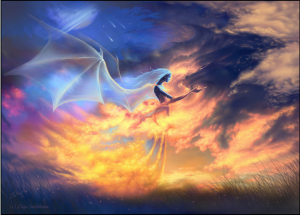Question 1
I’ve spent a lot of time talking about hiring an artist to do a portrait. I have so many other concerns: the writing (the finishing!), the critiquing, the editing, the proofing, the querying, the marketing, the production work, and the cover art. This doesn’t even account for the day job or life in between all the cracks. So why take time and money to bother with a portrait? After all, I can’t even use it for a cover if I go the self-publishing route since the only books that use portraits on the cover are dusty old tomes and biographies.
I wanted to learn more about this process from the artist’s perspective so I interviewed her. Over the next couple of weeks, I will post the interview. Perhaps you, too, will decide to follow your dreams from your written words to a painted picture, maybe even with Liiga Smilshkalne.
Question 1: Who is Liiga?
My name is Liiga, and I am from Latvia, where there may or may not be dragons. More specifically, I am from the country’s capital Riga, and the resemblance to my name is merely coincidental.
I started dabbling in painting pretty early in life, but it wasn’t until I discovered digital art and decided I absolutely need to know how all these people online had managed to create such wonderful, colorful paintings on this strange, new medium, that things got serious. Although I studied economics and business and afterwards political science in university, I never quite stopped drawing, until at some point I realized that what had initially been a hobby had turned into a job. So I’ve been pretty much continued along the same line ever since.

New bucket list item: get to Latvia to see the dragons! Click the title link following to see the shy dragon in the clouds better. Divia by Liiga Smilshkalne
Full interview will be available after the last of the selected questions has published on December 12.



